Louisville tree canopy: As heat builds, are mistakes made in the West End moving east?
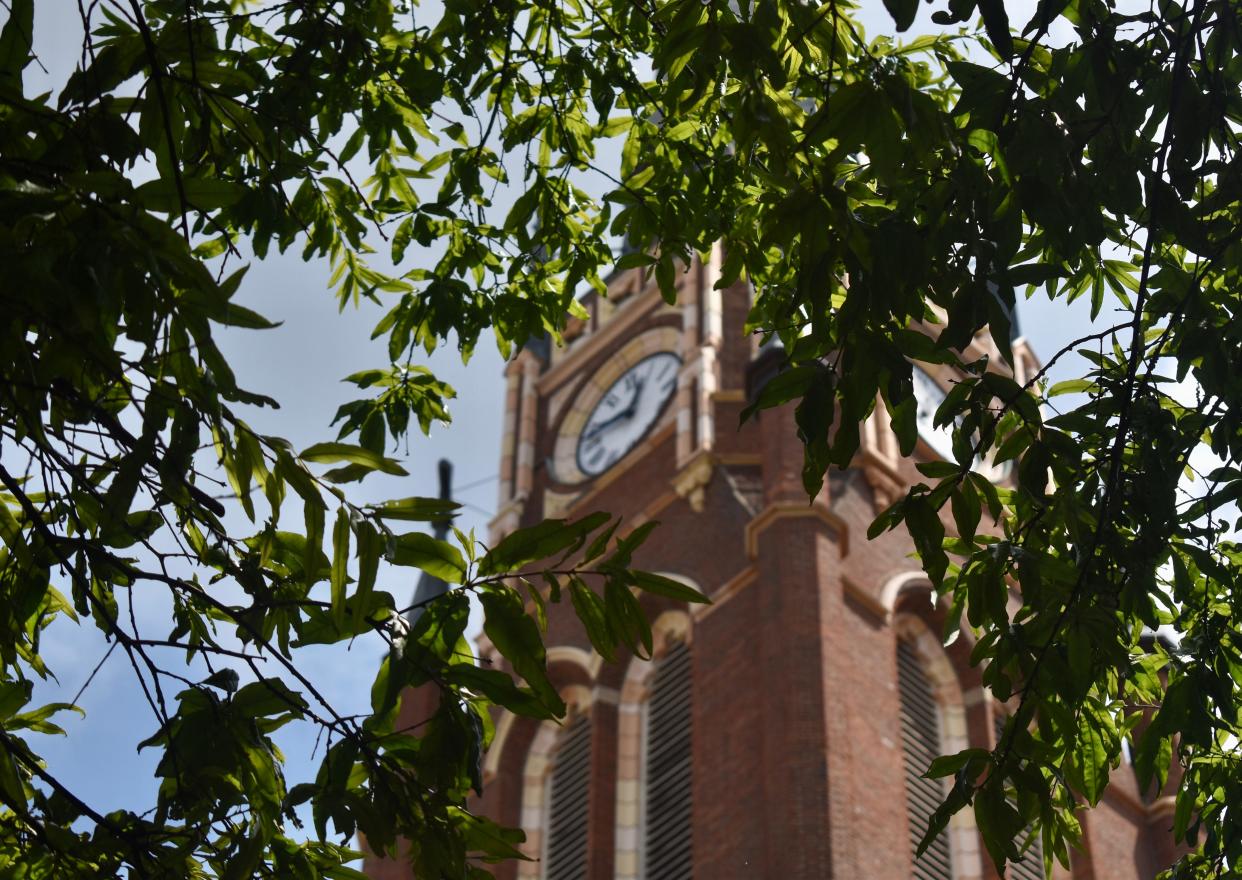
Bert Stocker has watched more and more logging trucks rumble through his community of Fisherville, where he has lived for the last 21 years.
They’re not just passing through. They’re hauling felled trees out of eastern Jefferson County — sometimes hefty, mature trees, with trunks nearly 2 feet in diameter, Stocker said.
These processions of timber are a product of rapid suburban sprawl to Louisville’s east, under local land development codes the city’s urban forestry staff say do not adequately protect existing trees.
At the same time, swaths of the city’s urban core, and its most underserved neighborhoods, lack tree canopy entirely. In addition to systemic injustices like redlining, failures of urban policy have left these places short of trees and the social, environmental and health benefits they provide.
Current local ordinances threaten to repeat some of those mistakes by leaving existing trees unprotected from development in the east, one of the county's last forested areas.
“If we're not paying more attention to what we're doing in the east,” said Cindi Sullivan, executive director of TreesLouisville, “it’s going to look exactly like the west.”
Past research on Louisville’s worsening urban heat and lack of foliage indicates a far more robust tree canopy is necessary to fortify public health against warming summers, rising flood risks and other environmental hazards.
Scorching heat in late July offered a reminder of how failing to manage urban heat can compound risks for groups most vulnerable to high temperatures, like seniors, children, outdoor workers and unhoused populations.
The gaps in Louisville’s tree canopy disproportionately afflict neighborhoods that are less wealthy, less white and more burdened by health issues, based on a Courier Journal analysis of tree canopy surveys, census data and urban heat assessments.
And staff of Louisville Metro’s Urban Forestry division, responsible for the city’s public trees, say they lack the resources to meet all of the city’s tree canopy challenges.
Where Louisville is missing trees
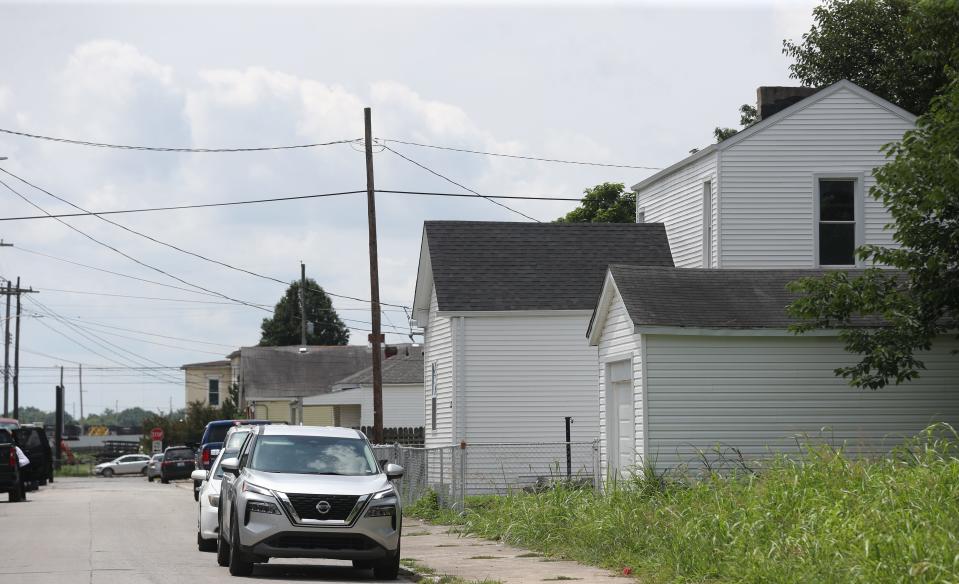
In 2019, Ebony Pryor found air quality lacking near New Birth Church, just across Interstate 264 from several major chemical plants in Rubbertown.
Issues spiked in the summer months, as heat amplified chemical odors in the neighborhood. The church lacked sufficient vegetation to help filter the air, or provide any kind of relief from high temperatures.
“We had nothing on our property,” said Pryor, the church’s chief financial officer. “No type of shade, no type of trees or anything like that.”
She was aware of the nonprofit TreesLouisville, and its crusade to build the city’s tree canopy through thousands of plantings, through her participation in the Rubbertown Community Advisory Council. Working with the organization to get the trees planted was easy, she said.
“It was just a matter of saying ‘yes,’” Pryor said. “They took care of everything.”
Four years later, the 55 trees planted at the church are thriving, and casting shade where there was none before.
Last year, TreesLouisville reported a 1% improvement in the city’s tree canopy between 2012 and 2019. Sullivan hailed the findings as meaningful progress, reversing the troubling trajectory of the organization’s previous study that found Louisville was losing an average of 150 trees each day.
Sullivan believes, anecdotally, the city’s canopy has continued to improve in the four years since that data was collected. But she knows there’s a long way to go, particularly in downtown and parts of the South and West ends.
“We are increasingly focused on those neighborhoods, those census tracts that we know are at the lower end of canopy,” Sullivan said, “because that’s where it’s needed most.”
When the organization’s 2019 tree survey is compared to local census data, correlations emerge between canopy and wealth, race, life expectancy and many other factors.
Where there is less money in Louisville, there are fewer trees. Some of these same places, particularly in central parts of the city, were also the most vulnerable to the urban heat island effect in a recent localized study by Climate Central, indicating higher temperatures than in nearby rural areas.
And on a hot summer day, homes without a strong tree canopy experience higher temperatures. This increases the need for air conditioning in neighborhoods where the price of a steep utility bill, or even the air conditioning unit itself, is more burdensome.
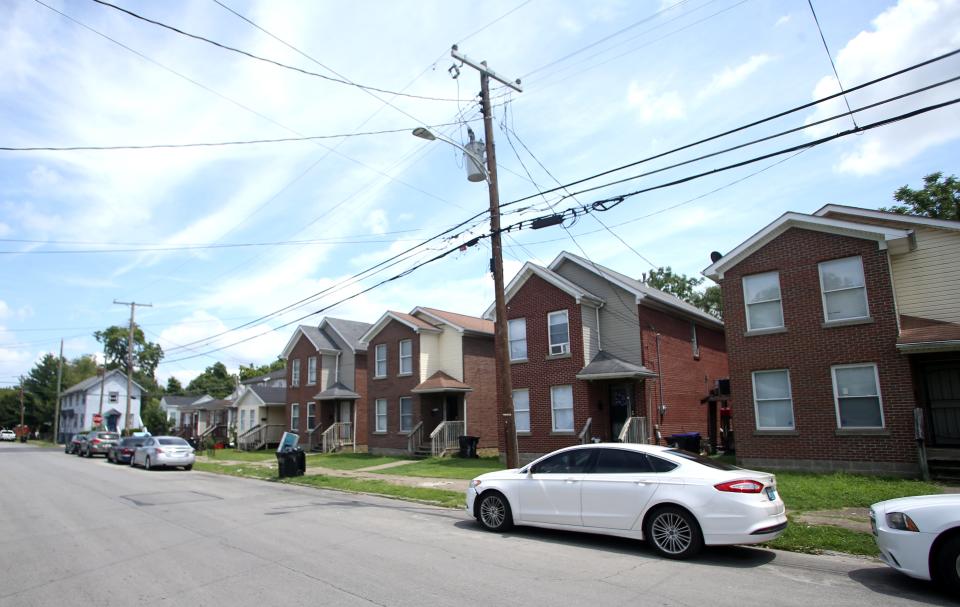
'Underfunded for a very long time,' despite city goals
In 2013, city officials pledged to “Establish a robust urban tree canopy and implement strategies to mitigate the urban heat island effect” in a detailed roadmap for local sustainability.
Trees cool neighborhoods by casting shade and evapotranspiration, the process by which plants release moisture into the air. But they also intercept stormwater and filter airborne pollutants, like ozone and carbon monoxide.
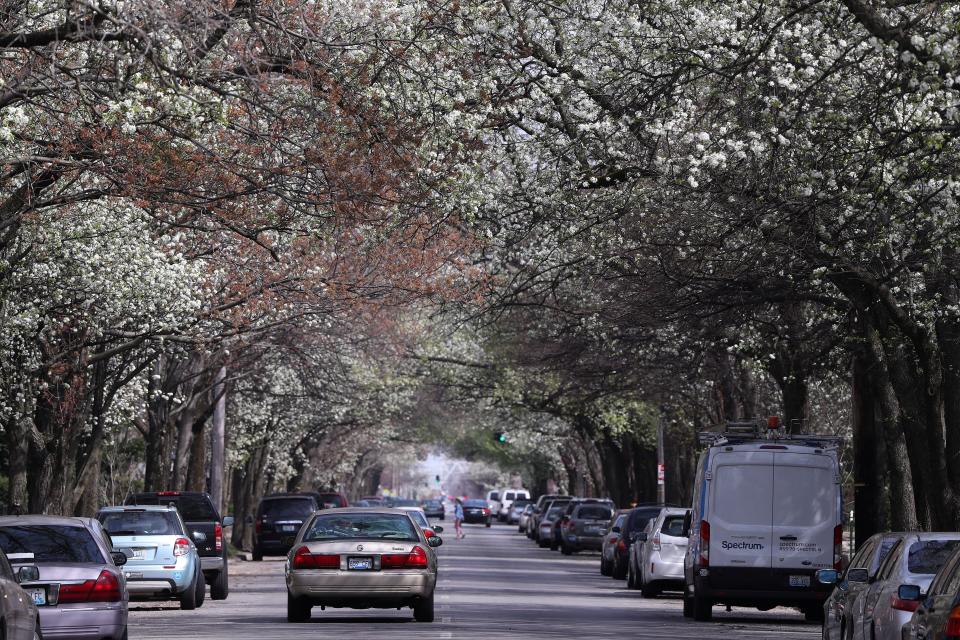
In a 2017 Metro ordinance, trees were credited with saving the city $330 million annually — about 300 times the Urban Forestry division’s annual funding for staff and equipment, according to Barry Edgar, who oversees the division.
Urban Forestry also has a $600,000 capital account for tree planting, she said, but it’s not nearly enough.
“We’re just a division that has been underfunded for a very long time,” Edgar said. “There’s a lot of trees in decline and there just aren’t enough resources out there that the city designates to us.”
The division is arranged for a staff of 22. Nine of those positions are unfilled, and retention is difficult when private sector jobs pay far better, Edgar said.
The understaffed division is trying to keep up with the inventory and health of every tree in the city's parks and right-of-ways. Some threats have proven unstoppable.
“As of right now, emerald ash borer is in a full rampage,” said Katie Karl, community forestry supervisor for the division. Ash trees are no longer planted by the city, because of their susceptibility to the invasive pest, and mounting losses have contributed to gaps in canopy.
"There are things that die and have not been replaced," said Aruni Bhatnagar, who leads the University of Louisville Christina Lee Brown Envirome Institute's Green Heart tree planting project. "I don't think there has been a great commitment from the city to be able to replace the trees that are dying, especially the ash trees."
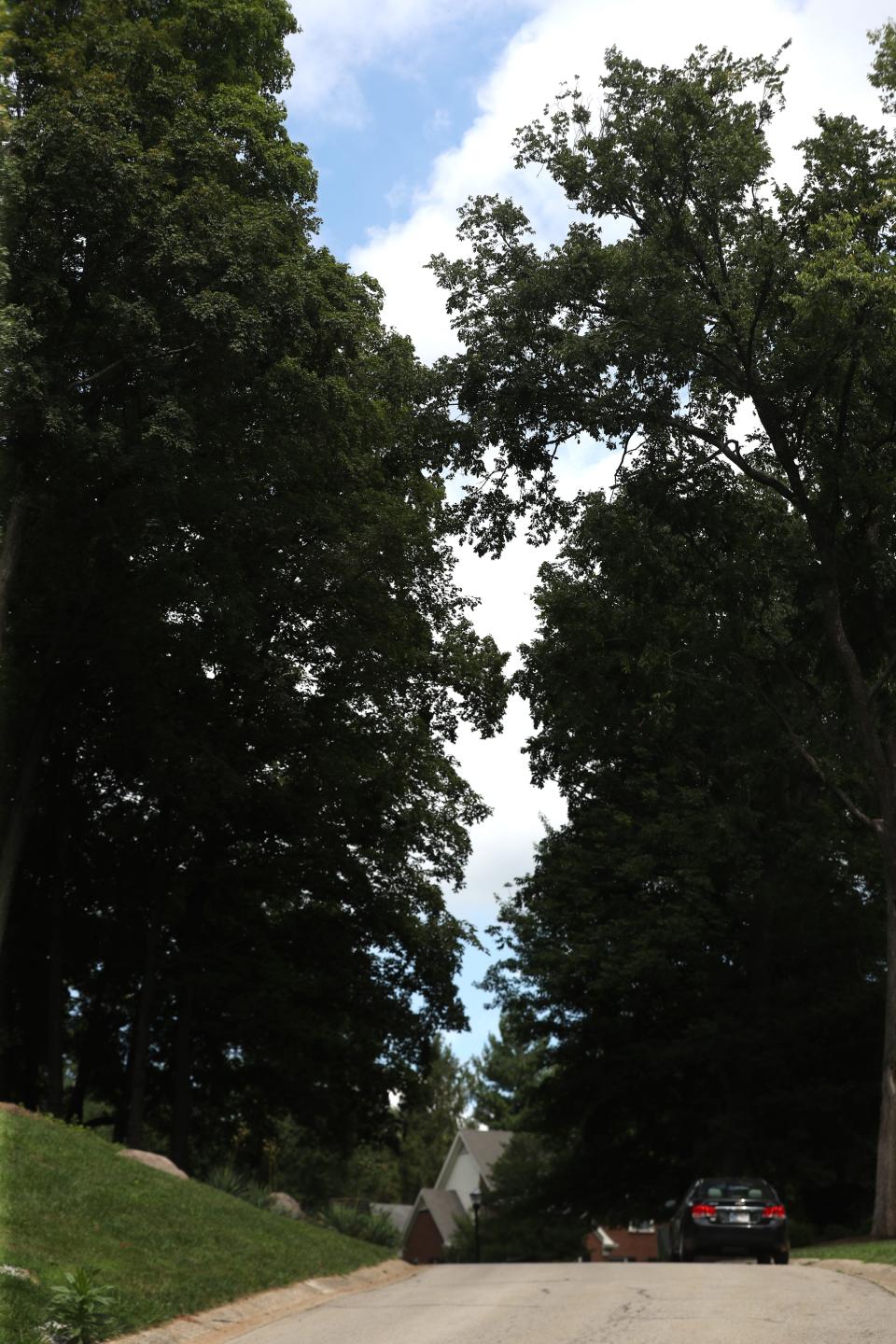
Urban Forestry staff also worry that lack of funding is restricting the diversity of Louisville’s tree inventory, making it more vulnerable.
Without diversifying, “our entire tree canopy is going to consist of only a handful of species,” Karl said, “and the next time a disease or a pest is introduced, we could lose a quarter of our tree population.”
Remaining forests unprotected
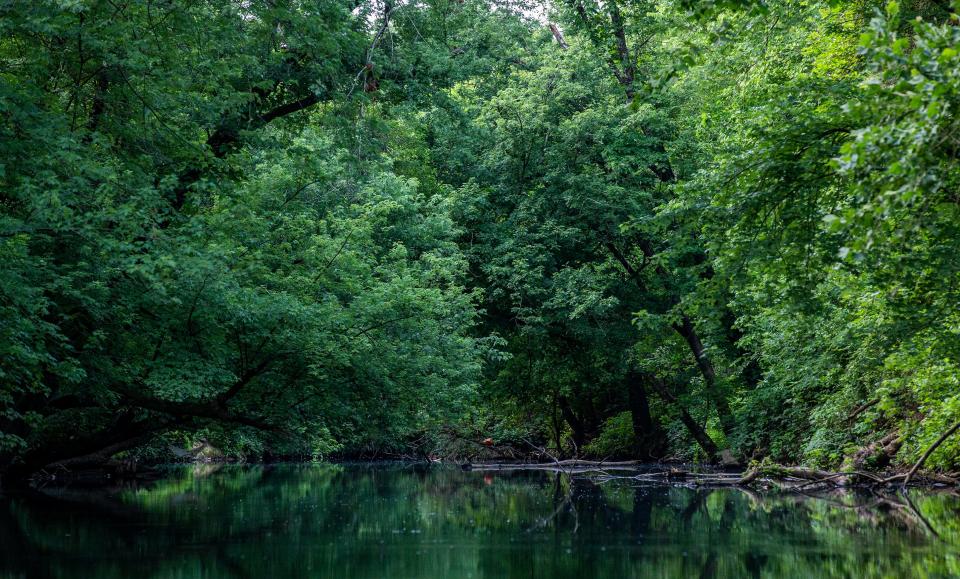
In eastern Jefferson County, where there are still patches of forests as there would have been 300 years ago, residents report rapid losses from development.
Outlying communities like Fisherville still cling to rural character, with impressive canopy coverage and temperatures to match. The area trends 2-3 degrees cooler than parts of downtown, based on urban heat island estimates from Climate Central.
Lucas Frazier co-leads Louisville Keep Your Fork, a nonprofit that monitors construction plans along Floyds Fork and advocates for environmentally sensible development. He pointed to one development that's removing more than 100 acres of tree canopy near the waterway, and replacing only a portion of that with new trees.
Saplings planted in place of felled trees take decades to mature before they can provide the same benefits, like cooling and stormwater interception. In the meantime, Louisville's urban heat island effect worsens, and risks of flooding — a frequent concern to residents along Floyds Fork — continue to grow.
"If we remove them and replace them with new saplings, then we are ... 20, 30 years behind in our tree canopy coverage," Bhatnagar said. "So we need to be very, very careful removing large trees, even for development projects."
Louisville's current land development code allows the problems to continue, both advocates and urban forestry staff pointed out. Ordinances don't value mature trees appropriately, allowing for replacing lost canopy with younger trees, and even enforcement of existing ordinances is lax.
“We don’t really have a strong land development code that protects trees,” said Edgar, with the Urban Forestry division. “There’s development going around all over the place, and there hasn’t really been enforcement making sure trees are replaced.”
Intense greening in the heart of urban heat
Louisville’s summers are steadily growing warmer, based on data from Climate Central. Without a drastic reduction in greenhouse gas emissions, the city will see far more 100-degree days later this century than it has in the past, according to federal climate projections.
One of the people thinking about that is Patrick Piuma, director of the University of Louisville’s Urban Design Studio. The studio’s office at the corner of Fifth Street and Muhammad Ali Boulevard overlooks Founders Square, a small oasis of foliage in downtown.
Here, amid the worst of Louisville's urban heat island effect, Piuma and the studio are embarking on an experiment with the Envirome Institute to "intensely green" the park. The Trager MicroForest Project will study how dense tree planting in a small park like this one can affect social, environmental and health factors for the nearby community.
Trees likely won't go in the ground for another year or more as the studio continues to measure baseline data for the park, like how it's used and how its current layout and greenness affect the stress levels of its visitors. Piuma said he'd like to add a display in the park that continuously shows the difference in temperature between the tree-shaded park and the barren parking lot across the street.
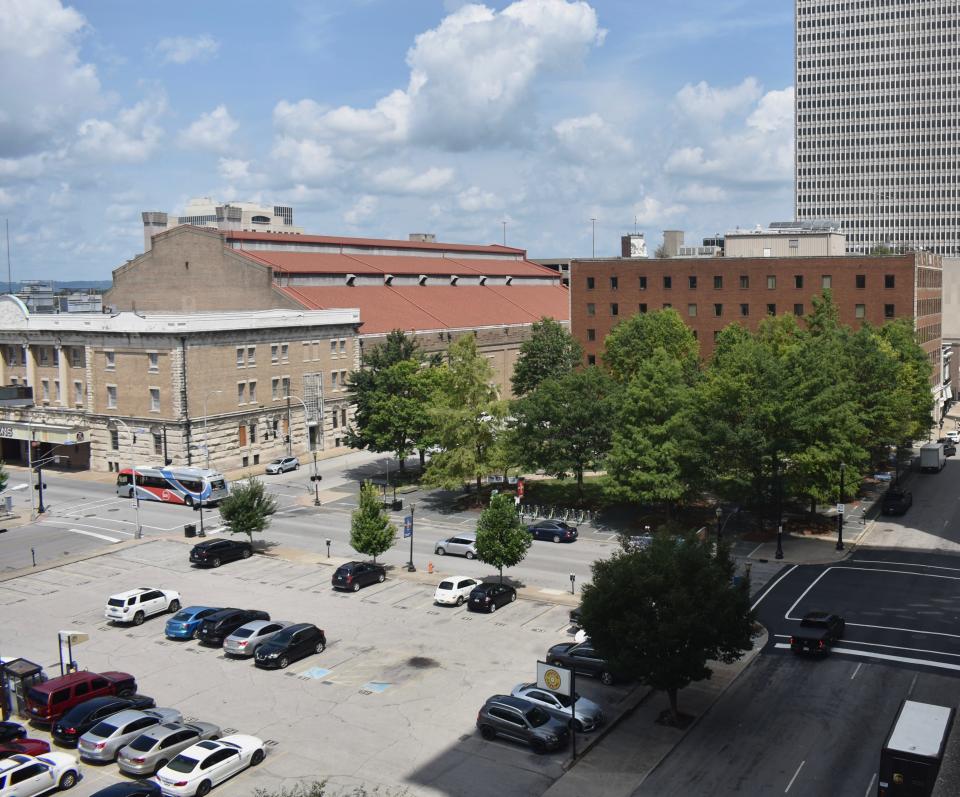
Looking outward for cities that have maintained a more robust tree canopy over their downtown, Piuma pointed to Savannah, Georgia, where he used to live. It's another old, southern city with even warmer summers, and its characteristic canopy of live oak trees helps keep streets cool.
"With climate change and things going the way they are, cities are heating up," Piuma said. Louisville's heat is moving toward that of cities like Savannah, "and without their tree canopy, I couldn't imagine living there."
Trees can be expensive to plant and maintain. Piuma acknowledged the efforts of an under-resourced urban forestry staff, and said, "You can only ask philanthropic organizations to do so much to help."
But the cost burden to cities like Louisville in future summers, as extreme temperatures continue to climb, will be far more without action, and trees need time to grow into their protective roles.
“If we don’t start doing things now,” Piuma said, “There’s gonna be a point where it won’t matter."
Connor Giffin is an environmental reporter for The Courier Journal and a corps member with Report for America, a national service program that places journalists in local newsrooms to report on under-covered issues. The program funds up to half of corps members’ salaries, but requires a portion also be raised through local community fundraising. To support local environmental reporting in Kentucky, tax-deductible donations can be made at courier-journal.com/RFA.
Learn more about RFA at reportforamerica.org. Reach Connor directly at cgiffin@gannett.com or on Twitter @byconnorgiffin.
This article originally appeared on Louisville Courier Journal: Trees critical in fighting heat island. Louisville canopy is lacking.

